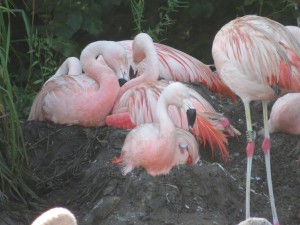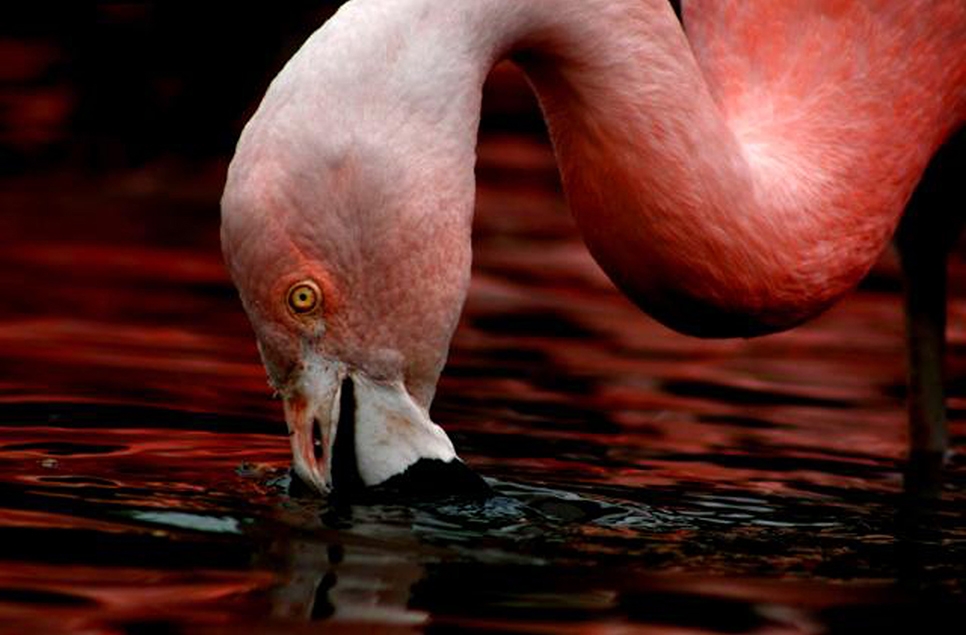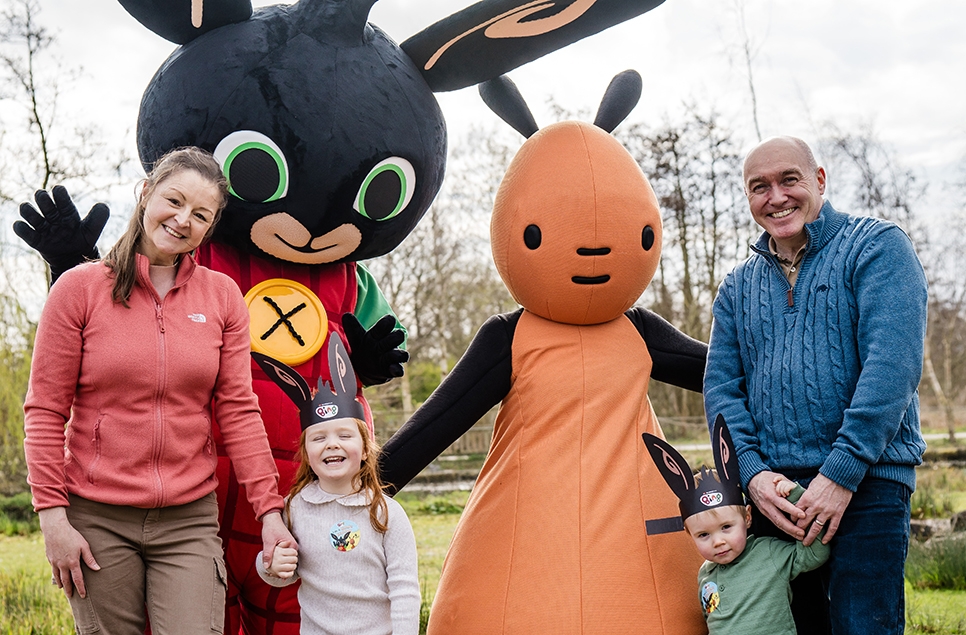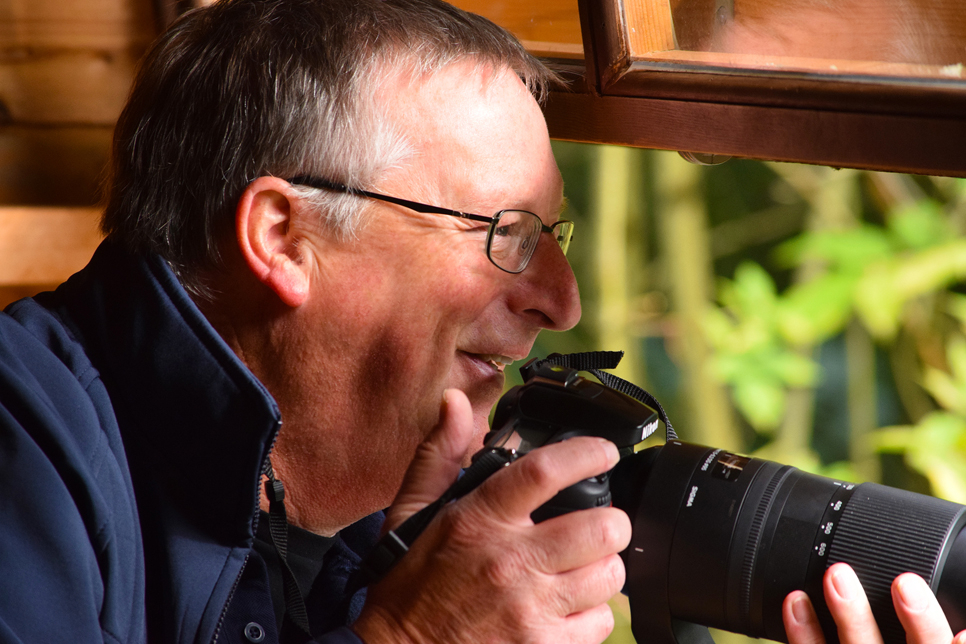UPDATE: five fluffy flamingo chicks

Our Chilean flamingos have now successfully hatched five fluffy chicks, following the arrival of their first egg in seven seasons this July.
The youngsters can be seen feeding beak-to-beak with their parents; tentatively exploring the area around their volcano mud nests and 'sunbathing' when the weather is warm, to absorb vitamin D for strong legs.
Watch the first chick's journey from egg to being fed by its mam at one-day-old here http://youtu.be/JbQzigrkk7o
The hatchings mark the culmination of a pioneering two-year conservation breeding project, during which flamingo chicks were hand-reared from eggs brought into the centre and integrated into our existing flock in a bid to encourage natural breeding.
Which they did!
WWT Washington’s centre manager Gill Pipes said: “This is a fantastic and hard-won achievement.
“It has been made possible by the amazing work of our dedicated staff and volunteers, who undertook the huge task of hand-rearing five flamingo chicks in 2013, followed by an incredible 24 last winter.
“Their efforts and the skills that they learned have led directly to our existing Chilean flamingo flock being stimulated into breeding, which is a great example of a WWT conservation breeding programme in action.
“Such skills and techniques can also pay dividends to wild populations. For example, building artificial nest mounds for wild flamingos has been used with great success at sites in Europe and Africa, where tens of thousands of wild flamingos have hatched directly as a result of this technique, pioneered in captivity.”
Did you know?
- There are six species of flamingo: greater, Caribbean, Andean, James’, Chilean and lesser.
- Flamingos have been part of the Wildfowl and Wetlands Trust’s breeding programme for more than 45 years and part of WWT Washington’s collection since 1986.
- Today, WWT has more than 600 flamingos at four of its wetland centres – all species at WWT Slimbridge, Chilean and greater at WWT Martin Mere, Caribbean at WWT Llanelli and Chilean at WWT Washington.
- Flamingos nest in large groups and live in even larger groups called colonies, which can be home to between 10,000 and one million birds at a time.
- Flamingos can live to more than 60-years-old and still breed.
- Their knees look as if they bend backwards, but this is actually their ankle with a very long foot attached. Their knees are tucked high up beneath their bodies.


